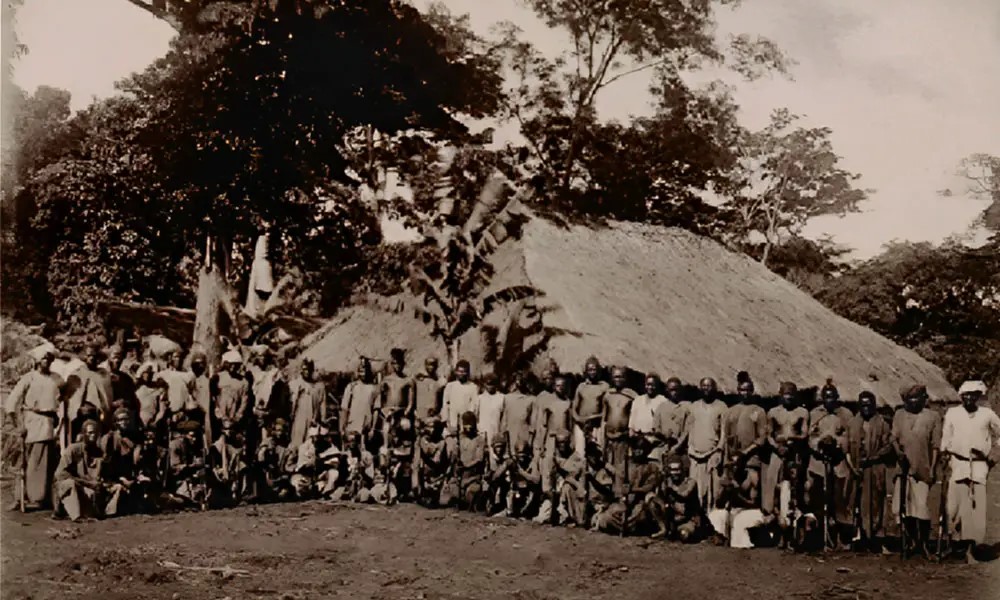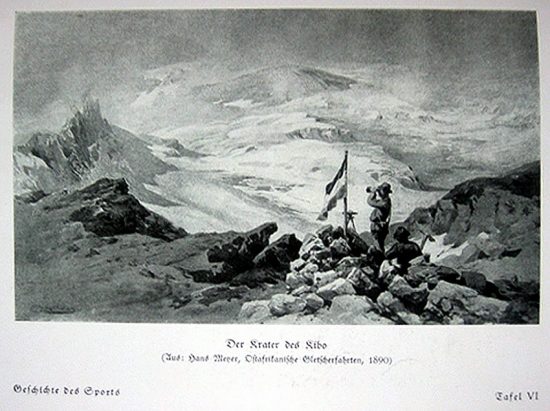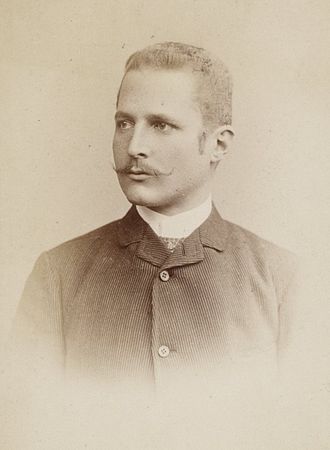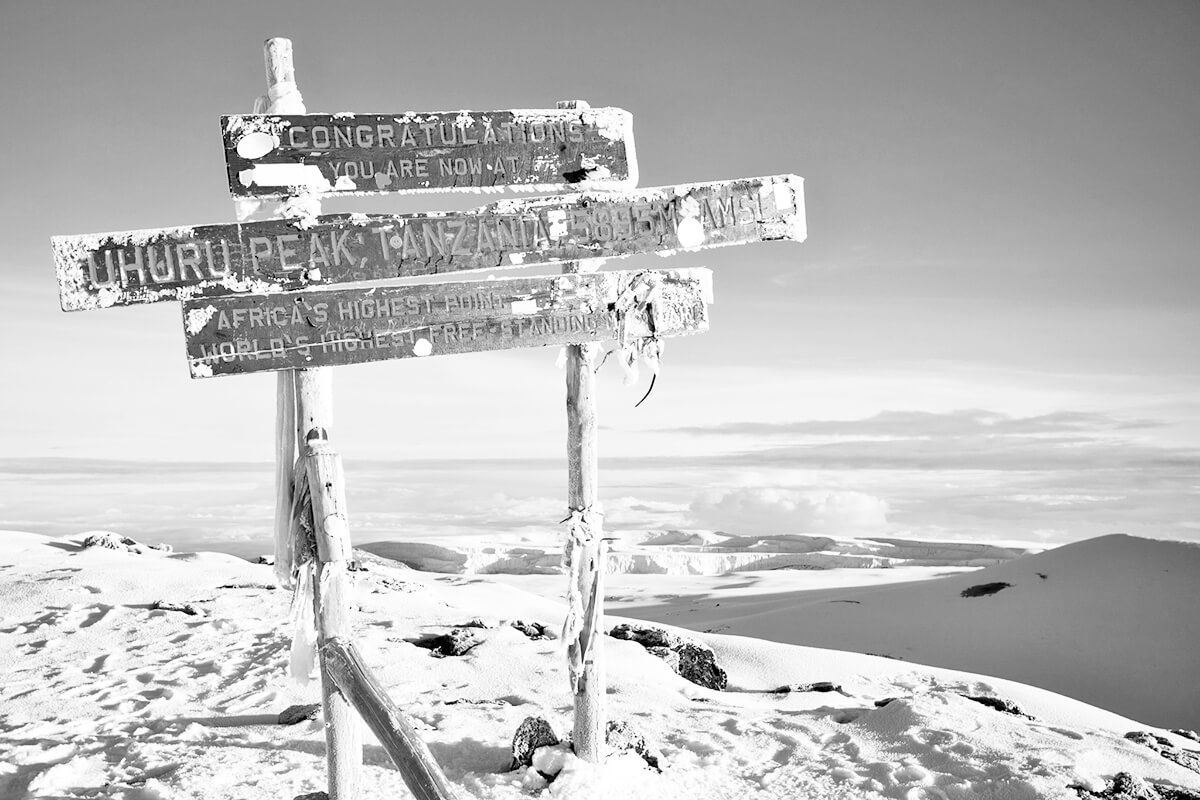Conquering the Roof of Africa: The Story of Hans Meyer and the First Ascent of Kilimanjaro

Mount Kilimanjaro, the majestic peak towering over Tanzania’s savannas, has captivated adventurers for centuries. Earning the nickname “Roof of Africa,” its snow-capped summit beckons climbers with its beauty and challenge. But who was the first to conquer this formidable mountain?
This story takes us back to the late 19th century and introduces us to Hans Meyer, a determined German geographer. Fueled by a thirst for discovery and a competitive spirit, Meyer set his sights on becoming the first to stand atop Kilimanjaro.
The Allure and Challenge of Kilimanjaro
News of Kilimanjaro, shrouded in mystery and local legends, reached Europe in the mid-1800s. Early explorers documented sightings of the snow-capped peak, igniting a spark of curiosity in Meyer. Unlike the familiar European mountains, Kilimanjaro presented a unique set of challenges.
The mountain’s dramatic rise from the base’s savanna to the icy summit, exceeding 19,000 feet, meant climbers would face the dangers of altitude sickness. Unpredictable weather conditions, with freezing temperatures and high winds, could turn a pleasant trek into a life-threatening ordeal. The diverse terrain – from lush rainforests teeming with life to barren, rocky slopes and glaciers clinging to the upper reaches – demanded a well-planned and adaptable approach.
Meyer’s Meticulous Plan and Team

Meyer knew conquering Kilimanjaro wouldn’t be achieved through bravado alone. He meticulously planned every detail of the expedition, assembling a team of skilled individuals who could complement his expertise. Ludwig Purtscheller, an Austrian mountaineer known for his experience with challenging climbs in the Alps, would be a crucial asset. Local porters, with their deep understanding of the mountain and its ecosystems, were invaluable for navigation, carrying supplies, and setting up camps. Recognizing the importance of scientific documentation, Meyer also included a geologist to study the mountain’s formation and a botanist to document the unique plant life found at different elevations.
Lessons Learned: The First Attempt (1887)
Their first attempt in 1887 ended in disappointment. The team reached the base of Kibo, Kilimanjaro’s highest peak, but a combination of bad weather and inadequate preparation for the extreme conditions forced them to turn back. This initial failure, however, proved to be a valuable learning experience. Meyer recognized the crucial role of proper acclimatization, allowing the body to adjust to the gradual decrease in oxygen at higher altitudes. He also realized the importance of establishing strategically placed camps along the ascent route, providing rest and shelter for the team. Back in Europe, Meyer spent the following year analyzing his mistakes and meticulously planning a second attempt.
A Second Attempt with Renewed Focus (1889)
October 1889 marked the second attempt. This time, their approach was different. Following established climbing routes, they established camps at strategic intervals, allowing their bodies to adapt to the decreasing oxygen levels. They procured better equipment, including specialized clothing and footwear designed for the harsh mountain environment. The team composition remained largely the same, with Purtscheller and the experienced local guides forming the core climbing group.
The Journey Up the Roof of Africa
Their journey wasn’t without its challenges. The dense rainforests at the lower slopes were choked with thick vegetation, making progress slow and arduous. As they ascended, the terrain became increasingly rugged, with scree slopes and volcanic rock formations testing their physical stamina. The unpredictable weather added another layer of difficulty, with sudden snowstorms and strong winds threatening to derail their progress.

Despite the hardships, the team persevered. Meyer’s meticulous planning and leadership kept them motivated. The local guides, with their knowledge of the mountain’s hidden dangers and the best routes to navigate them, proved invaluable. The camaraderie and shared determination within the team were crucial in overcoming the physical and mental challenges they faced.
A Historic Summit: Standing on the Roof of Africa
Finally, on October 6, 1889, after weeks of grueling climbs and battling the elements, Meyer and Purtscheller stood on the summit of Kilimanjaro – the first Europeans to achieve this remarkable feat. The sense of accomplishment must have been overwhelming, standing atop the “Roof of Africa” with a breathtaking panorama of the continent sprawled beneath them.
Beyond Personal Triumph: A Lasting Legacy
Meyer’s accomplishment wasn’t simply a personal triumph; it was a pivotal moment in the history of mountaineering in Africa. His detailed accounts of the climb, including meticulous descriptions of the various ecological zones and the challenges faced on the ascent, became invaluable resources for future expeditions. His maps provided the first accurate representation of Kilimanjaro’s topography, paving the way for organized climbs in the years to come.
Beyond the Scientific Contributions: A Spark of Global Fascination
Meyer’s ascent sparked a global fascination with Kilimanjaro. Newspapers across Europe and America reported on his feat, igniting a sense of adventure and a desire to conquer this majestic peak. Mountaineers from around the world were inspired by Meyer’s story, and Kilimanjaro soon became a coveted destination for explorers and adventurers. Travelogues and photographs depicting the mountain’s beauty and the challenges of the climb fueled the public imagination.
A Complex Legacy: Colonial Context and Environmental Considerations
However, the legacy of Meyer’s ascent isn’t without its complexities. The colonial context of the late 19th century adds another layer to the story. Meyer’s expedition was partially funded by the German government, which viewed Kilimanjaro as a symbol of potential colonial dominance in the region. While Meyer’s scientific pursuits were genuine, his achievement also served as a flag-planting exercise for European power. It’s important to acknowledge this historical context and recognize the role that European colonialism played in the early exploration of Kilimanjaro.
Environmental Considerations and Sustainable Tourism
Today, Kilimanjaro faces a different set of challenges. The increasing popularity of Kilimanjaro treks has led to concerns about environmental degradation. Overcrowding on popular routes, littering, and improper waste disposal threaten the delicate ecosystems of the mountain. Sustainable tourism practices are crucial to ensure that future generations can experience the beauty of Kilimanjaro. Companies like Roam Wild Adventure prioritize responsible trekking practices, minimizing environmental impact and supporting local communities. They work with experienced local guides who are knowledgeable about the mountain’s fragile ecosystems and ensure trekkers follow proper waste management protocols.
The Enduring Legacy of Hans Meyer

Despite these complexities, Hans Meyer’s accomplishment on Kilimanjaro remains a remarkable feat of human endurance and exploration. His meticulous planning, unwavering determination, and reliance on a skilled team laid the groundwork for future successful climbs. Today, Kilimanjaro stands as a UNESCO World Heritage Site, attracting thousands of trekkers each year. While reaching the summit is still a challenging feat, the routes are well-established, with established camps and experienced guides ensuring the safety of climbers.
The story of Hans Meyer and the first ascent of Kilimanjaro serves as an inspiration for anyone who dares to dream big. It reminds us that achieving great things requires meticulous planning, the ability to learn from failures, and the unwavering support of a dedicated team. It also highlights the importance of respecting the power and beauty of nature. Kilimanjaro may be the “Roof of Africa,” but the lessons learned from Meyer’s ascent resonate far beyond the slopes of this majestic mountain.

Planning Your Own Kilimanjaro Adventure
For those inspired by Hans Meyer’s story and dream of conquering Kilimanjaro themselves, companies like Roam Wild Adventure can help turn that dream into reality. We offer various Kilimanjaro group treks, catering to different experience levels and fitness goals. We can also create a personalized itinerary, and our experienced guides will ensure proper acclimatization, safe passage through challenging terrain, and a summit attempt with the best chance of success. Contact us today to help plan your adventure.
Whether you’re a seasoned mountaineer or an aspiring adventurer, Roam Wild Adventure can help you experience the thrill of climbing Kilimanjaro while adhering to sustainable practices that protect the mountain’s delicate environment for generations to come. So, lace up your boots, pack your spirit of adventure, and embark on your own Kilimanjaro journey, following in the footsteps of the pioneering Hans Meyer.
Further Exploration:
The story of Hans Meyer’s ascent of Kilimanjaro opens doors to exploring other aspects of mountaineering history and the unique challenges of climbing in Africa. Here are some potential areas for further exploration:
- The history of mountaineering in Africa: Research the evolution of climbing expeditions in Africa, focusing on other pioneering ascents and the development of modern climbing infrastructure on Kilimanjaro and other prominent peaks.
- The impact of colonialism on exploration: Explore the complex relationship between European colonialism and the desire to explore and conquer uncharted territories like Kilimanjaro.
- The role of local guides and porters: Investigate the crucial role played by local communities in supporting mountaineering expeditions, their historical contributions, and the challenges they face in the modern climbing industry.